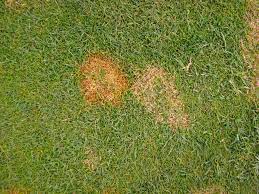Embarking on the journey of horticultural elegance, a verdant, flourishing lawn is the quintessence of meticulous home upkeep. Unfortunately, the intrusion of pesky lawn fungi can swiftly turn this source of pride into a nightmare. Enter the unsung luminary in lawn maintenance – the lawn fungicide. This piece explores the complex functions of vital agents, their mechanisms, and their vital function in keeping your lawn healthy and vibrant.
Envision this scenario: A lawn adorned with lush green grass enhances your home’s curb appeal and provides an ideal outdoor activity environment. Nevertheless, most homeowners continue to battle grass fungus. Understanding the function of lawn fungicides is crucial for maintaining healthy, disease-resistant turf and enhancing aesthetic appeal. Observe as we delve into the fascinating universe of lawn fungicide and discover how they become your lawn’s most valuable ally.
The Fundamentals of Lawn Fungi
Understanding the adversary is crucial before delving into the fungicidal complexities of lawn fungus. These creatures thrive in humid environments, causing blemishes, color distortions, and the fading of once-thriving grass. Fungi, including the infamous dollar spot and the menacing sepia sward, can significantly damage your lawn’s overall well-being.
The Operational Mechanism of Lawn Fungicides
Lawn fungicides are meticulously formulated to combat these fungal intruders. Most of these agents operate by stymieing the growth and procreation of fungi or by disrupting their cellular processes. They incorporate active constituents targeting the fungi while exhibiting forbearance toward your grass and other beneficial organisms inhabiting the soil.
Dichotomy of Contact versus Systemic Fungicides
Discerning the dichotomy between contact and systemic fungicides proves pivotal for efficacious lawn maintenance. Contact fungicides create a protective barrier on the grass’s surface, thwarting fungi from infiltrating the plant. Conversely, systemic fungicides assimilate within the grass, endowing internal protection against fungal infestations. Each variant has merits; the selection depends on your lawn’s specific requisites.
Preventive versus Curative Application Dynamics
Temporal precision is of paramount importance in the realm of lawn fungicides. Fungal infections can be treated either preventatively, administered before they occur, or curatively to treat existing infections. Fungi, once established, can pose significant health risks, necessitating curative interventions to prevent and treat these issues effectively.
Discerning the Apt Lawn Fungicide Selection
Different fungicides are made differently, so choosing the right one for your lawn requires careful consideration. The effectiveness of fungicides depends on factors like fungus type, infection severity, and specific lawn conditions. Seek guidance from a lawn care specialist or adhere to product directives to make an informed choice.
Strategies for Optimal Fungicidal Application Outcomes
Realizing the best results with lawn fungicides entails more than product selection. Prudent application is tantamount to success. Ensure even coverage, follow dosage instructions, and account for ambient factors like humidity and temperature.
Summary
Lawn fungicides are the unwavering protectors of your turf’s beauty and vitality in the complex dance between fungi and your lawn. Equipped with an understanding of these agents’ functionality, you can now approach lawn care with assurance, reversing the impact of fungal invasions. Transfigure your lawn into a robust, disease-resistant sanctuary. Let the luxuriant, verdant expanse become a testament to your mastery of lawn care and the potency in comprehending lawn fungicide.

